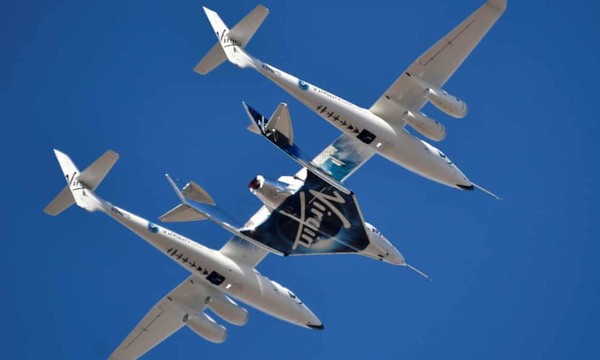The year 2021 brought forth several events that highlighted anthropogenic climate change. The Intergovernmental Panel on Climate Change (IPCC), an organ of the UN tasked with establishing the causes and impacts of anthropogenic climate change and proposing strategies to deal with the consequences, released its to-date most comprehensive and definitive assessment. The report extensively explained the physical science basis of climate change trends, mechanisms, and impacts. It predicted a continual rise in sea levels and more extreme weather conditions, and strongly affirmed that human activities are responsible for the warming of the planet.

This year also marked the first commercial suborbital flights. Virgin Galactic became the first commercial enterprise in history to organize a flight to the stratosphere, soon followed by Blue Origin. Both these corporations hope to hold such flights more frequently in the near future, aiming at several hundred flights annually. The events were greatly advertised and sensationalized, with references to opening up the sky and space for everyone. However, overshadowed by the sensationalism is the environmental impact of these flights. For instance, the Virgin Galactic rocket released a significant amount of soot (amorphous solid carbon). It has been estimated that the pollutant matter released from a single suborbital flight is comparable to that of a hundred long-haul conventional air flights. Such stratospheric pollution is expected to have a significant role on global warming, but how severe the impact will be is not yet well understood. Richard Branson, the billionaire owner of Virgin Galactic, deflected criticism on the environmental impacts by promising future investments in climate-friendly initiatives to offset the flight emissions. In the absence of proper knowledge of the emissions’ consequences and effective ways to combat them, it appears that our atmosphere is open to billionaires to be experimented with. If things go very wrong, they surely have a plan in place for us all.
Blue Origins widely publicized that their rocket burned liquid hydrogen and oxygen, “clean fuel” that do not directly release CO2 into the atmosphere (but released other substances such as water vapor). It must be noted, however, that the liquefaction of hydrogen and oxygen gases into usable fuel for the rocket requires a net input of energy. This energy would usually come from burning fossil fuels which necessarily involves the release of CO2, unless renewable sources are exclusively used — which there is zero indication of. Moreover, the release of water from this spacecraft is not as trivial as it appears to be: water vapor in the upper atmosphere is known to cause heating of the atmosphere and interfere with cloud formation and rainfall patterns. Hundreds of such flights annually would result in significantly altered temperature and rainfall patterns.
Owing to the recency and novelty of suborbital tourism, there is a near-total lack of regulation in the enterprise, especially rules pertaining to environmental pollution. It is ridiculous that cars, which release a much smaller amount of pollutants, must pass environmental safety tests, while there are no such regulations for commercial spacecraft. The fact that these flights can only be afforded by the very rich further worsens carbon inequality — the richest 1% have double the carbon emissions of the poorest 50% of humanity. As humanity wakes up to the climate crisis it confronts, priorities are hugely misplaced. Developing countries are increasingly being blamed for supposedly large carbon footprints, while the per-person emissions are the greatest in more developed countries. The extensive use of non-renewable energy sources in developing countries is often brought up, ignoring the fact that energy and industrialization are necessities for development. Significant atmospheric pollution from purely luxurious ventures of wealthy countries, corporations, and individuals, such as private jets, super yachts, and high-end race cars, are not brought up half as often. In addition to having contributed only slightly to the release of atmospheric pollutants over the past few centuries, developing countries also lack the resources to overcome the consequences of global warming. If suborbital tourism takes off in the near future, it will further enable the privileged few to make life hard for the many.
There is currently no effective method in place to capture the pollutants from the atmosphere to convert and store them, but the most privileged are successfully finding more novel ways of releasing more pollutants. The consequences of climate change are already getting more frequent and severe, and the past two months alone saw droughts and huge forest fires in many Mediterranean countries and extreme flooding in parts of Asia, Africa, and Europe. Until the impact of suborbital spacecraft is well-understood and effective mechanisms to remove pollutants are found, there can be no justification for wreaking havoc on the planet for the sake of a few minutes of being able to look down on the rest of us.

